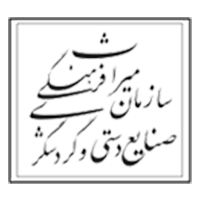history
The History of Haft Tappeh Museum
Haft Tappeh Museum has been built in the vicinity of the site and architectural remnants of Haft Tappeh.
After the second season of archaeological excavations at Haft Tappeh in 1967, considering the abundance and importance of the finds, late Dr. Ezatollah Nagahban, head of Haft Tappeh excavations, put forward the idea of constructing a building complex composed of a local museum for displaying and studying the finds, a laboratory for restoring objects and artifacts, and a residence for archaeological expeditions. Therefore, inspired by both Elamite and the region’s native architecture, construction of Haft Tappeh Museum, with an area of 1475 m3, began in the spring of 1970. The form of these brick buildings and cement vaults evokes Elamite architecture. There is also a garden museum in the complex which has been inspired by Persian gardens; it started to work simultaneous with Dr. Negahban’s proceeding to carry out excavations.

Figure 1: Constructing residential buildings next to the museum
Having finished constructing the single-story building of the museum, they inaugurated the museum in April 1973 and it began to work as the local (archaeology) museum with the purpose of keeping, displaying and preserving artifacts recovered from the historical site of Haft Tappeh. The Ministry of Petroleum, Ministry of Culture and Art, Khuzestan Governor’s Office, Planning and Budget Organization, and Haft Tappeh Sugarcane Agro-Industry Company all made outstanding contributions to the museum construction.

Figure 2: Haft Tappeh garden museum entrance
Unfortunately, in 1980, as a consequence of Iran-Iraq war bombardment, the museum was closed and its objects were transferred to other places. The museum was reopened and reorganized in February 2002 by Tchogha Zanbil Word Heritage Base. The display department of the museum carried historical objects and its research department contained base experts’ research and study results. The museum initially had 6 rooms but due to the high number of finds discovered from later excavations and lack of sufficient space for keeping them (inscriptions in particular), three rooms leading to the central court were separated and appropriated as repository and inscription hall in 2006. The historical site and museum building of Haft Tappeh were together registered on the Iranian National Heritage List with number 1717 in 11 May 1986.



Figure 3: Museum rooms before renovation, 2017-2018
Years 2017 and 2018 started a new season of change for Haft Tappeh Museum. Over these two years, two phases of renovation and improvement were conducted on the floors, showcases, and shelves by designing, lighting and painting in order to approach museum standards more.



Figure 4: Museum rooms after renovation, 2017-2018



